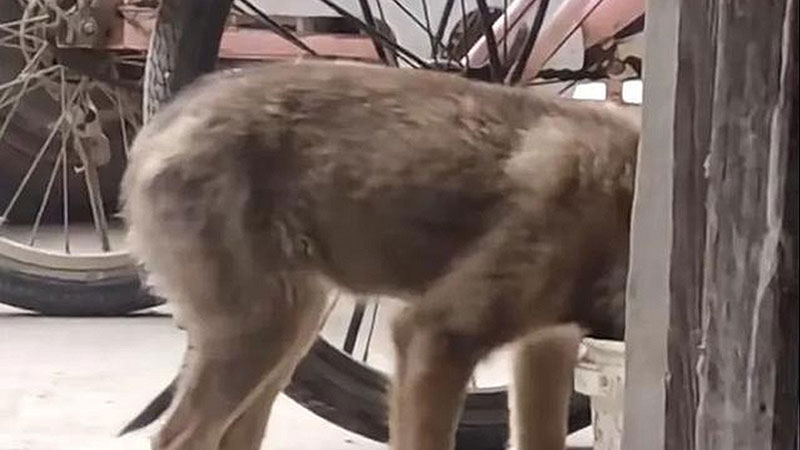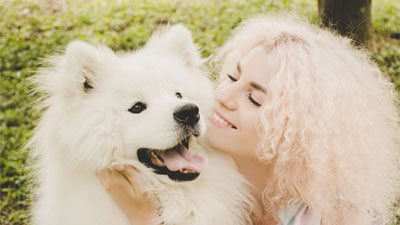- Size
- Smallest
- Small
- Small to Medium
- Medium
- Large
- Giant
- Characteristics
- Smartest
- Hypoallergenic
- Fluffy
- Best Guard
- Best Family
- Best for Kids
- Low Shedding
- Healthiest
- Police Dogs
- Most Calm
- Quietest
- Color
- White
- Black
- Grey
- Brown
- Blue
- Red
- Coat
- Hairless
- Short
- Long
- Origin
- Japan
- China
- Australia
- Germany
- Italy
- United States
- France
- Group
- Hound
- Terrier
- Herding
- Toy
- Working
- Sporting
5 Reasons Why Is Your Dog Tucking His Tail?

Dog tails are known to convey a wide range of emotions and intentions. From wagging in delight to standing erect in confidence, a dog's tail is an important indicator of their current state. However, there are instances when a dog tucks their tail between their legs, which can be a cause for concern for pet owners. If you're wondering why your dog is tucking their tail, it's important to understand that tail-tucking behavior can signify various emotions and needs. In this article, we will explore the different reasons why dogs tuck their tails and how to respond to this behavior accordingly.
Understanding Tail Language in Dogs
Before delving into the reasons behind tail tucking, let's first establish a basic understanding of dog tail language. A dog's tail position and movement can provide valuable insights into their emotional state. Here are a few common tail positions and what they may indicate:
Neutral Position: When a dog's tail hangs loosely and extends outwards in a relaxed manner, it generally signifies a calm and contented state. This is the default position for many dogs when they are in a neutral or relaxed state.
Upward Position: A dog with its tail held upright, sometimes even slightly curved, often denotes confidence, alertness, and sometimes even assertiveness. This tail position is commonly seen in breeds like Siberian Huskies or Chihuahuas.
Wagging Tail: Tail wagging can have different meanings depending on the context and the dog's overall body language. It can indicate happiness and excitement, but it can also be a sign of anxiety or arousal. Pay attention to other body signals to better understand the dog's emotional state.
Tail Tucking: When a dog tucks its tail between its hind legs, it is generally a sign of fear, submission, or anxiety. This behavior makes the dog appear smaller and less threatening to perceived threats.
Now that we have a general understanding of tail language, let's explore the different reasons why dogs might tuck their tails:
1. Fear and Anxiety
One of the primary reasons why a dog may tuck its tail is fear or anxiety. In stressful or threatening situations, a dog may instinctively tuck its tail in an attempt to make itself appear smaller and less threatening. This behavior is often accompanied by other signs of fear, such as flattened ears, cowering, trembling, or attempts to hide.
If your dog is consistently tucking its tail due to fear or anxiety, it's important to address the underlying cause and provide a safe and comforting environment. Gradual desensitization and counterconditioning techniques, along with positive reinforcement training, can help your dog build confidence and better cope with their fears. However, if your dog's anxiety is severe or interfering with their quality of life, seeking guidance from a professional dog behaviorist may be beneficial.
2. Submissive Behavior
In the canine world, tail tucking is often associated with submissive behavior. When a dog tucks its tail between its legs, it is sending a clear message to other dogs or humans that it poses no threat and is willing to submit. This behavior is commonly observed when approached by more dominant individuals, whether they are other dogs or unfamiliar people.
If your dog is tucking its tail out of submission, it's important to create a safe and positive environment that encourages confidence-building. Avoid situations that consistently overwhelm your dog or put them in uncomfortable positions. Instead, focus on positive reinforcement training to help your dog gain confidence and strengthen their social skills. Avoid punishing or scolding your dog for submissive behavior, as this can exacerbate their anxiety and undermine their trust in you.
3. Pain or Discomfort
In some cases, dogs may tuck their tails due to pain or discomfort. Tail injuries, musculoskeletal issues, or internal ailments can cause dogs to exhibit tail-tucking behavior. Dogs may instinctively protect their injured or sensitive tail by keeping it tucked close to their body.
If you notice sudden or persistent tail tucking accompanied by other signs of pain or discomfort, it is important to consult with a veterinarian. A thorough examination can help identify any underlying medical conditions that may be causing your dog's discomfort. Once the cause is identified, appropriate treatment can be administered to alleviate your dog's pain and prevent further discomfort.
4. Past Trauma
Dogs that have experienced past trauma, such as abuse or neglect, may develop a habit of tucking their tails as a response to perceived threats. This behavior may be a learned response to avoid further punishment or harm. Dogs with a history of trauma may associate certain people, places, or objects with negative experiences, leading to heightened anxiety and a tendency to tuck their tails.
If you suspect that your dog's tail tucking behavior is related to past trauma, it is crucial to provide a safe and nurturing environment. Patience, understanding, and positive reinforcement training can help your dog build trust and confidence over time. Consider consulting with a certified dog behaviorist who specializes in working with traumatized dogs to develop a tailored behavior modification plan.
5. Breed Predisposition
It's important to note that certain dog breeds may exhibit tail tucking behavior more frequently, as it is ingrained in their genetics or breed history. For example, some herding or working breeds, such as Border Collies or Australian Shepherds, have a tendency to tuck their tails when focused, concentrating, or anticipating potential actions. This behavior is often seen during intense training or work sessions.
Understanding your dog's breed predisposition can help you differentiate between tail tucking due to fear, anxiety, or breed-specific behaviors. If your dog's tail tucking behavior is a natural breed trait, it is generally not a cause for concern unless it is accompanied by other signs of distress or discomfort.
How to Respond to Tail Tucking Behavior
Responding to tail tucking behavior requires patience, empathy, and understanding. Here are a few strategies to help your dog:
Create a Safe Environment: Provide your dog with a safe space where they can retreat when feeling anxious or overwhelmed. This could be a designated room or crate filled with comforting items, such as their bed, toys, or blankets.
Positive Reinforcement Training: Engage in positive reinforcement training techniques to build your dog's confidence. Reward calm and relaxed behavior, and gradually expose your dog to situations or stimuli that trigger tail tucking. Use treats, praise, and play to reinforce positive responses and help your dog associate previously fearful situations with positive experiences.
Consult with a Professional: If your dog's tail tucking behavior is persistent, severe, or interfering with their quality of life, it may be beneficial to consult with a certified dog behaviorist or trainer. They can assess your dog's behavior, identify any underlying issues, and develop a tailored training plan to address the behavior effectively.
Address Potential Medical Issues: If there is a possibility that your dog's tail tucking is due to pain or discomfort, consult with a veterinarian for a thorough examination. Follow their recommended treatment plan to alleviate your dog's discomfort and address any underlying medical conditions.
Conclusion
When it comes to understanding why a dog tucks their tail, it is important to consider the context, overall body language, and individual history of the dog in question. Tail tucking behavior can indicate fear, anxiety, submission, pain, past trauma, or even breed predispositions. By recognizing the reasons behind your dog's tail tucking behavior and responding with patience, empathy, and positive reinforcement training, you can help your dog feel more confident, secure, and emotionally balanced. Remember, each dog is unique, and professional guidance may be necessary for severe or persistent cases.
You May Also Like
 Help & Advice7 Reasons Why Dogs Always Keep Their Mouths Closed
Help & Advice7 Reasons Why Dogs Always Keep Their Mouths Closed Dog BehaviorWhy Do Dogs Yawn? and The Meaning Behind
Dog BehaviorWhy Do Dogs Yawn? and The Meaning Behind Help & AdviceThe 4 Reasons Behind Dogs Avoiding Eye Contact
Help & AdviceThe 4 Reasons Behind Dogs Avoiding Eye Contact Help & AdviceWhat Is The Hardest Dog Trick?
Help & AdviceWhat Is The Hardest Dog Trick? Dog Training TipsHere are the 7 Most Important Dog Commands
Dog Training TipsHere are the 7 Most Important Dog Commands Dog Training Tips5 Easy Steps: How to Teach a Dog to Smile
Dog Training Tips5 Easy Steps: How to Teach a Dog to Smile